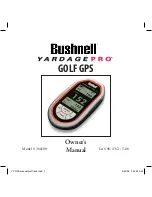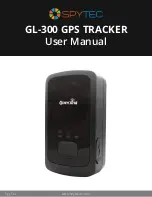
Page 55
SmartOne C User Manual
Confidential & Proprietary Information
9100-0410-01 R2.4
MESSAGING PRIORITY
PRIORITIZATION OF PERIODIC STANDARD MESSAGE REPORT RATES
The SmartOne supports several rates at which it will send a Periodic standard message. Periodic versus Scheduled
standard message rates are mutually exclusive. This is the priority of the different rates at which the SmartOne will
send a standard message (Highest is listed first):
• Rate specified by Undesired Input State.
• Rate specified for when the SmartOne is inside its Change of Location Area.
• Rate specified for when device is In Motion. (Note, when inside the Change of Location Area, this rate
affects sampling, but not reporting, as indicated by a higher priority for inside Change of Location Area.)
• Rate specified for when the device is At Rest.
MESSAGE PRIORITIES
It is possible that message types may collide. Whenever feasible, the SmartOne will examine its known schedule
and reschedule lower priority messages to occur after higher priority ones. If there is not enough time in the known
schedule for all scheduled messages to be transmitted in a reasonable time, or there is insufficient memory to
queue them, the lowest priority message(s) could be dropped. In any case, unscheduled messages (for example,
Input Status Changed) shall cancel pending messages of lower priority and not cancel pending messages of higher
priority. The following list shows the priority of message types, with the highest priority being listed first.
• Contact Service Provider
• User Defined Raw message*
• User Defined Truncated message*
• Change of Location Area
• Replace Battery
• Undesired Input State
• Re-Center
• Diagnostics
• Accumulate/Count
• Input Status Changed
• Device Turned On
• Normal Location (In-Motion or At-Rest).
*NOTE:
The two user defined message types actually have equal priority. Either one will cancel the other one. If,
for example, the user interface commands the device to send a Truncated message, and then, before it has time to
obtain a fix and send the message, the user commands a Raw message, the Raw message will be sent.
















































